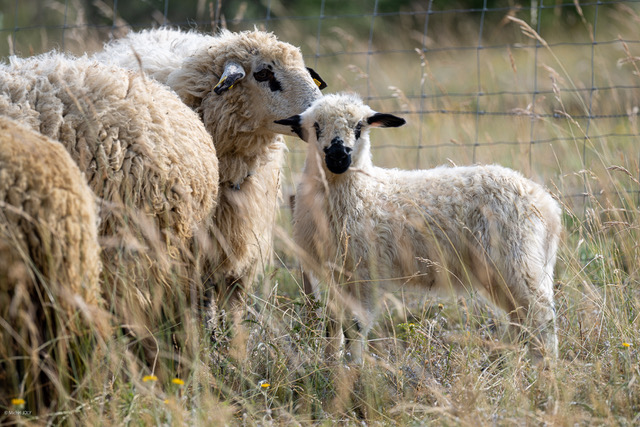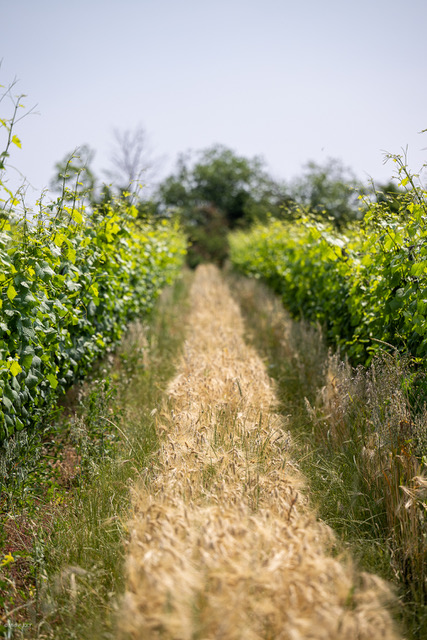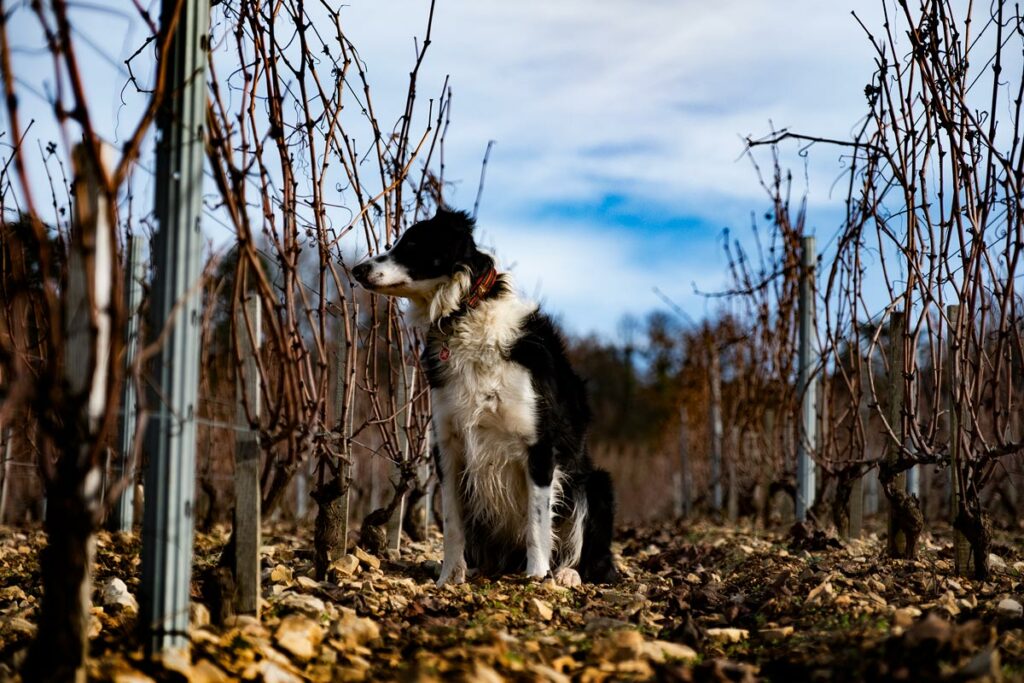Mixed cropping at the Domaine
True to the philosophy of biodynamics, Didier Montchovet adopted a mixed cropping model for the Domaine right from day one. Our plot of Montagne de Cras is a good example of this: its total surface area is 4 hectares (9,88 acres), which is home to the vines but not only! It also contains:
– Hedges and thickets with thick dry-stone walls, which are a perfect habitat for birds, lizards and fauna in general, as well as flora such as orchids, Mahaleb cherry trees, etc.
– Limestone grasslands which provide grazing for sheep and are a great source of biodiversity.
– Solitary trees: black pines, Scots pines, sorb trees. Each of these trees bears witness to our Domaine’s past: wood from the sorb tree was used to make the screw of the wine presses, the black pine was planted after Phylloxera…. We also allow dead trees to decompose to encourage biodiversity.
– fruit trees: we have a collection of hardy trees: Burgundy apple trees, cherry trees, almond trees, etc.
Vineyard work: biodiversity and sheep for grazing
We use green manure in our vines: in summer we sow vetch, rye, fava beans, mustard, chinese radish and peas between the rows… These plants offer many benefits: they improve soil fertility, provide nitrogen and support microbial life. They are also bee-friendly, to the delight of the local beekeeper! These plants are also a treat for wildlife: hares, rabbits, partridges… diversity is always a virtuous circle.
Having animals graze the vineyards is nothing new! Evidence of this can be found from the 18th century. As is often the case, this, like many other natural practices, was abandoned when industrial viticulture came along. We are bringing grazing back into fashion with a flock of sheep that gives our vineyards a thorough natural mowing!
Our flock is made up of Thone and Marthod sheep, a breed from the Alps, which is recognisable by its dark “sunglasses” and snout. The sheep are allowed to graze in the vineyards outside of the vegetative periods. Their grazing saves us from having to mow the vineyards on the tractor once if not twice or more. They also fertilise the soil naturally. These eco-friendly methods respect the soil and the vines and foster biodiversity. You can also find sheep’s wool lining the bird’s nests in the hedges around the vines, keeping the eggs well-insulated and warm. In the summer, the sheep graze fields, some of which pertain to the Natura 2000 area, which hosts protected species that are particular to limestone grasslands.


A dog, a garden… and chickens!
No farm is complete without a dog! Boris’ children, born in California’s famous Napa Valley, decided to name their Border Collie, Napa. Napa is very useful on the farm, especially for rounding up the sheep and moving them from one plot to another during the grazing periods. She’s really more of a companion than a dog.
In both summer and winter, our garden, in which we carry out permaculture experiments, produces wonderful vegetables, fruit and berries. Figs, kiwis, peaches, quinces, cherries… it’s veritably a garden of Eden!
Thanks to our friend Fred Ménager from the Ferme de la Ruchotte, we have also adopted some specimens of old breeds of hen: Gauloises Dorées, Gauloises Grises, Le Mans and Marans.


